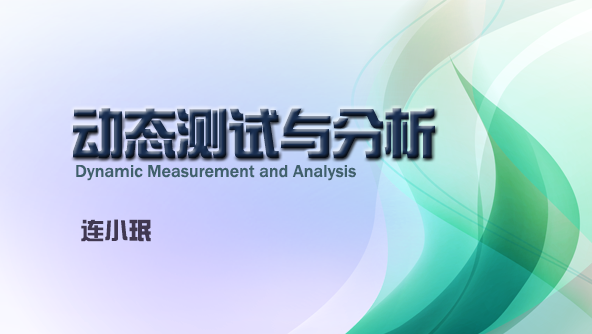
当前课程知识点:Socially-Responsible Real Estate Development: Learning to Use Impact Assessment Tools Effectively > Module 3: Social Impact Assessment > Debrief > Discussion 3 - part 2
现在我们来看第三个问题
这一次的作业 情况比较糟糕
也许论文可以补救一下
这一点我们刚刚讨论过了
正如你们在阅读材料和多个讲座中看到的一样
运用影响评估
找到最佳项目方案 这是有可能的
也就是说 可以找到一个可以更好地满足
所有利益相关方需求的项目方案
它不仅仅可以维护对开发商有利的措施
同时也可以尽量将负面影响降到最低
运用评估在更大范围内的社区
产生正面效应
而不仅仅是保证满足最低要求
你们对此有何看法
我觉得巴罗的文章强调的一点就是
执行SIA时的社会过程
是可以改变的
这个过程可能对相关各方之间的合作而言
存在正面影响
我觉得这方面可能在实施评估的过程中
被忽略了
为什么这么说
这个过程为什么是可以改变的
我觉得是因为让所有相关人士聚在一起这个行为本身
让他们能够开诚布公 畅所欲言
说出自己打算采取的措施 各自的底线
包括不同人对于底线的理解
然后进一步谈到可能产生的影响
包括正面影响
清晰地表达这些事情
是非常
有益的
我们可能都曾碰到过这样的情况
被迫完成作业
被迫参与合作
我们可能能更好地理解
自己的需要及所处的环境
作为社区成员 如果我没有机会向别人表达我的主张
肯定不敢奢望我在意的问题能够得到解决
这些就是我们可以创造价值的地方
而且我相信 如果我们不把它当成一次风险
而是当成一次机会
你关注的问题就更有可能得到解决
所以这是你的责任
也可能不是 不管怎样
它都让你更有可能得到自己想要的结果
这次作业中还有没有什么问题
是我们没有提到的
承认开发的积极影响
这个话题好像没有谈太多
这也是SIA非常重要的部分
并且 我们也可以借此机会辨认或者确定
之前没有被理解的正面影响
包括分析中遇到的
这对于改变或者影响政治支持的平衡
或者利益相关方的平衡
也很重要
这是一个非常重要的问题
开发商可能会说
这个项目会把所有资金吸引到这个地区
这句话强调了什么
你们说的这些忧虑只是小部分
我们带来的更多是福利
所以社会评估应该更侧重于
提升土地价值 如何产生更多税收
项目会为居民创造什么新机会
在你们讨论其他社区利益的附加因素时
在得与失的基础评估中
也有所得 他们也应该被重视
这一点很重要
思考作业中的
这个问题时
你们还想到了什么
我觉得在这一点上 设想社区可能需要什么
是很危险的
如果你是开发商 你过来说
我手头的项目有争议
可能每个人都会发对
你不问就不会知道
所以
我们要强调受影响群体的参与度
这可能会让你发现 事实上他们比你想象的
更加支持你
所以说 不问怎么知道呢
从你们对作业的反馈来看
我想你们已经掌握了最重要的问题
现在就是要把EIA SIA 及社会责任等内容
应用到案例研究中
我们会在《马来西亚的森林城市》中讨论
那是下一堂课的内容
感谢你们参与这次作业讨论
-Welcome
--Welcome
-Course Welcome
--Welcome
-Entrance Survey
-Entrance Survey
-Learning Objectives
-Course Schedule
-Meet Your Course Instructors
-Grading and Completion Criteria
--html
-Introduction
-Lectures
--html
-Readings
--Social Impact Assessment: The State of the Art
--Social Impact Assessment and Public Participation in China
-Developer Interview
--Module 1
--html
-Questions
-Assignment
--html
--html
--Peer Assessment
-Debrief
--Discuss
-Introduction
-Lectures
-Readings
--Methods of Environmental Impact Assessment
--Public Participation and Environmental Dispute Resolution
--Environmental Impact Assessment for Developing Countries in Asia
--Importance of Nonobjective Judgements
--Example Environmental Impact Statement
-Developer Interview
--html
--Module 2
--html
-Questions
-Assignment
--html
--Peer Assessment
-Debrief
--Discuss
-Introduction
--Text
-Lectures
--html
-Readings
--Introduction to Social Impact Assessment
--Effectiveness in Social Impact Assessment
--Example Social Impact Statement
-Developer Interview
--Video
--Text
-Questions
-Assignment
-Debrief
--Discuss
-Introduction
--Text
-Forest City Case Study
--Part 1
--Part 2
--Part 3
--Additional Forest City Information
-Lectures
-Readings
--Dealing with An Angry Public
--Facility Siting and Public Opposition
-Developer Interview
--Module 4
--Text
-Questions
-Assignment
--html
--SCENARIO
-Debrief
--Discuss
-Introduction
-Lectures
-Readings
--Why Would Corporations Behave in Socially Responsible Ways?
--Social Impact Assessments of Large Dams Throughout the World
--Environmental Sustainability Principles for the Real Estate Industry
-Developer Interview
--Module 5
-Questions
-Assignment
--html
--SCENARIO
-Debrief
-Further Resources
-Thank You
--Thank you for taking the course
-Acknowledgements



